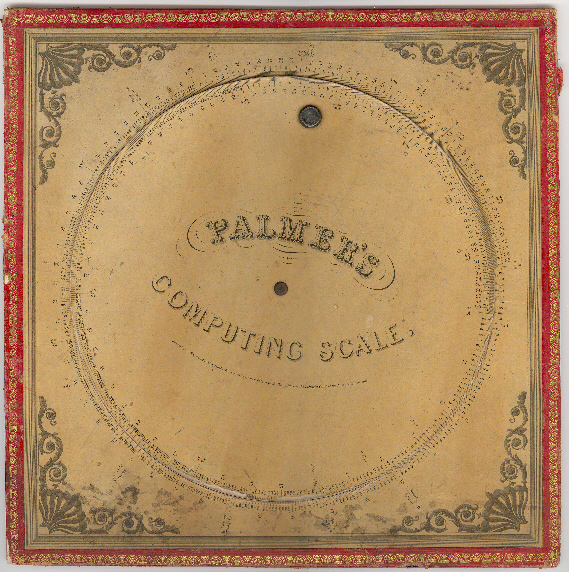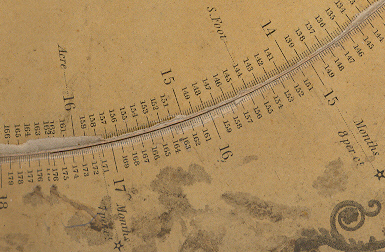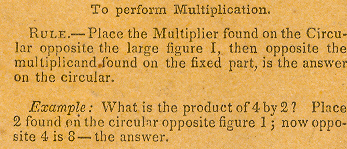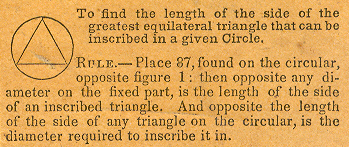1. This rule was "patented" in 1843. This is the early version of that rule. According to Cajori (History of the Logarithmic Slide rule) the copyright was transferred to Fuller in1846 who introduced a version with a different scale arrangement by the addition of non-logarithmic circles for determining the number of days between given dates. Fuller called this new part a Time Telegraph and the modified instrument as a whole a Computing Telegraph. Whilst the type carpenter's rules for calculation were certainly made in U.S.A. before the date of this rule, this remains one of the earliest slide rules produced in that country.
2. The rule is mentioned in Volume 1 of the Scientific American (no. 8). In that is they present brief highlights of the Eighteenth Fair at the American Institute. Of Palmer's computing scale they say:
"Palmer's Computing Scale.—This is a revolving table, for solving mathematical problems, by a simple mechanical process. it consists of logarithmeric combination of numbers, arranged on two circles, one of which revolves within the other; so that, by the simple process of moving a circular card, the relation of the figures to each other is changed, so as to solve the most difficult problems. The invention must come into general use, though we have not learned where they may at present be procured." ( http://www.history.rochester.edu/Scientific_American/vol1/vol1n008/p3c4.htm ).
3. The rule itself has a number of gauge points relating to area and interest. On the picture below one is S[quare] Foot and has the value 144, which is the number of square inches in a square foot, another is Acres and has the value 160 which is the number square perches in an acre. (A perch, also called a rod or pole, has a length of 5.5 yards, which is a quarter of a chain (22 yards), which in turn is a tenth of a furlong (220 yards) which in turn is an eighth of a mile (1760 yards.) Another of the gauge points marked Months 8 per c has the value 150. This is amount by which a capital sum has to be divided to get the monthly interest when the annual rate of interest is 8%.
4. On the back of the rule there is an explanation of the gauge points and how to use the rule.
This rule is from the collection of C Barnes.
Front view

Detail - Gauge points



